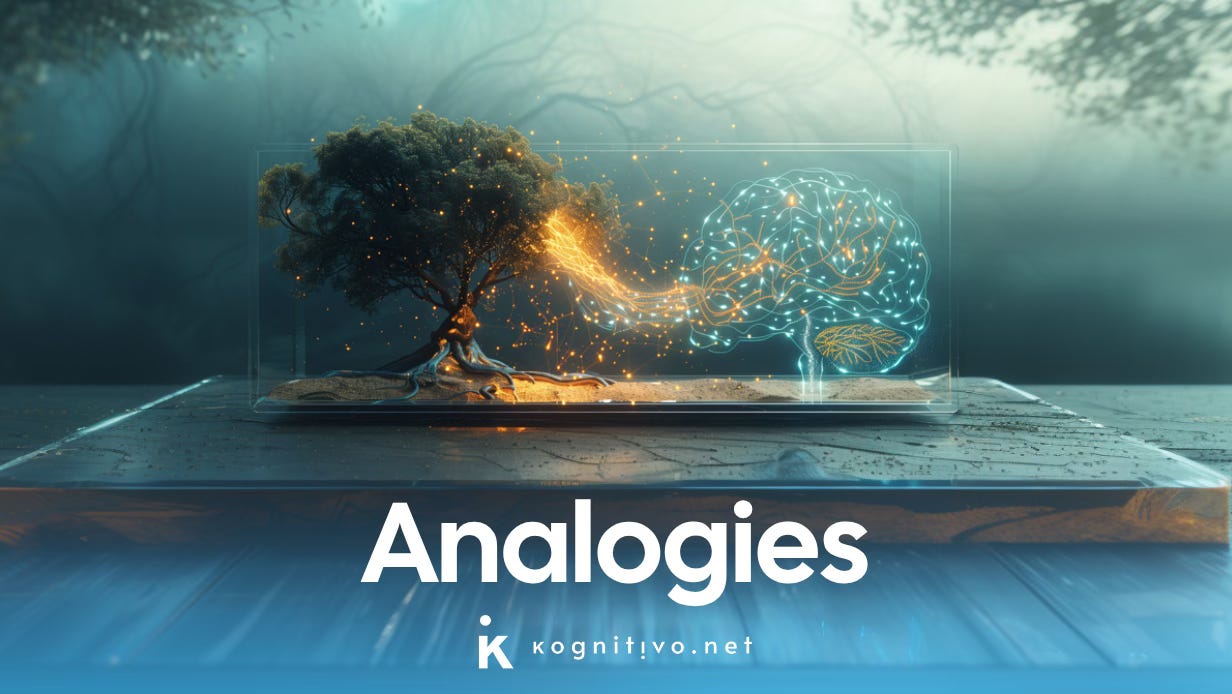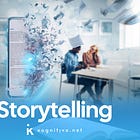The instructional power of analogies
Ever explained something by saying “it’s like…”? Discover why analogies are one of teaching’s most powerful tools and how the right one can make complex ideas unforgettable.
Have you ever tried explaining why popcorn pops to a five-year-old? You can’t exactly talk about vapor pressure. Instead, you’d probably say something like this: “It’s like a balloon that bursts when it gets too hot.” Or consider photosynthesis. You might say, “Plants eat sunlight.” Technically false, but cognitively brilliant.
If you’ve ever done any of these (and I’d be very surprised if you haven’t), congratulations, you’ve used one of the oldest teaching tools in the world: analogies.
Analogies make complex concepts accessible, relatable and intuitive. They’re often the reason behind many of our most memorable learning moments. But analogies don’t always land. Some mislead, others fall flat. How can we make sure that they lead to the desired “aha” moment? And what does the science say?
What’s an analogy?
An analogy compares two things that share key features. We use one to explain the other because those shared features are easier to notice in the second. The resemblance runs deeper and more systematically than looks or labels: it’s about how the parts relate and what roles they play.
A few things to remember:
The two elements in an analogy don’t have to be physical objects. They can be situations, dynamics or actions: like photosynthesis and eating.
Analogies don’t need a perfect match to work. Most share only a few features, and that’s enough. In fact, if the match is perfect, it’s probably not an analogy, but an equivalence: “The sun is like a star,” isn’t an analogy because the sun is a star.
Researchers often define analogies not by referring to shared features but to a “common structure of relationships” or “relational mapping.” While technically more accurate, I feel like that phrasing can make something intuitive sound unnecessarily abstract.
A comparison? A metaphor?
Not quite. These terms overlap, but they’re not interchangeable. Analogies are a type of comparison and metaphors often express analogies, but there are non-analogical comparisons and metaphors that don’t convey analogies.
A comparison contrasts features or quantities. Non-analogical comparisons don’t imply shared features, just contrast: “Berlin is colder than Barcelona” (it is) or “She speaks better Japanese than I do.”
A metaphor is a linguistic device (“X is Y” or “X is like Y”) that can express an analogy but not always. “Time is a thief” or “He has a heart of stone” are metaphors, not analogies since they’re evocative, not structural. In any case, as you can see, the boundaries can get blurry.
Why analogies matter for learning
Analogies are cognitive shortcuts that help grasp new ideas using the mental models we already have. They let the brain recognize familiar relationships in unfamiliar territory, fostering knowledge transfer.
When done well, analogies make abstract ideas concrete, reveal patterns and bridge intuition with formal knowledge.
They trigger that “Oh, so it works like that” moment where comprehension clicks. Analogies are a natural way to use knowledge transfer for memory encoding. Cognitive science has long supported their use for learning and teaching, with early work dating back as far as 1966.
A now classic study from the 80s examined how many medical students could solve a medical problem involving stomach tumors. To help them figure out how radiation therapy destroys tumors, some students were given a military analogy. The analogy was based on the story of a general who captured a fortress by dividing his army into small groups and deploying them on different roads. The goal was for the students to come up with the “ray convergence solution”: small low-intensity rays from machines positioned around the patient converge to destroy the tumor in the same way as the small army groups took the fortress.
An astonishing 80% of medical students who were exposed to the military analogy could come up with the solution to destroy tumors (low-intensity rays converge and destroy tumors, just as small army groups take a fortress), compared to only 10% of those not exposed to the analogy.
More recent studies and meta-analyses confirm it: comparing cases and then making principles explicit, consistently leads to deeper, more transferable learning.
The danger of analogies: misconceptions
Research shows that analogies improve learning. But analogies are an inductive learning strategy. They help learners infer general principles from examples and that means that they can also spread misconceptions. If students generalize the wrong kind of similarity, the analogy can backfire.
Poorly chosen analogies can lead to featural distraction, that is: irrelevant features overshadowing the ones the analogy was intended for. Other factors that play an important role include, crucially, students’ prior knowledge and metacognitive abilities, as well as effective teaching. In fact, some studies have shown that using analogies without further context can even hinder less experienced learners.
To prevent this, show where the analogy holds and where it breaks. Emphasize explicitly the structural correspondences and state which features don’t match. Making limits explicit ensures that students with fewer cognitive resources aren’t left behind. The best way to counterbalance the potential dangers of inductive techniques (such as analogies) is to provide the formal rule right after the generalization is made. This approach achieves the generation effect while preventing misconceptions.
Interestingly, research also suggests that well-designed analogies that lower the cognitive load with specific cues, can actually help struggling students. The key is in how the analogy is designed and what role it plays within the learning experience.
Original analogies
The secret ingredient that makes analogies truly stick, is, however, originality. Some analogies are so popular that they’re almost the standard way to explain certain concepts: mitochondria being the powerhouse of the cell, a fraction being like a piece of a pie, electricity flowing like water through a circuit, an atom being like the solar system or the east-west European division in the late 20th century being an iron curtain.
I call these the “greatest hits” of analogies. These well-worn analogies have even become part of everyday language in many cases, and they do a solid job because they’re familiar and easy to recall.
But analogies are fundamentally a creative tool. Well-worn analogies have often lost their punch and this lack of novelty reduces their explanatory power. The most memorable and impactful analogies are often original ones you create fitting the concept and the learning context.
The fresh, custom-tailored comparisons that match the exact concept and the prior knowledge of the audience you’re dealing with, make learning more vivid. Such as the analogy of the general for the medical students treating tumors.
Here are some examples of analogies I personally like: the immune system is like a detective agency (immune cells are detectives finding suspects) or inflation is like watering down soup (there’s more quantity, but the value is less). These work for a rather general audience: depending on who the learner is, one could use even more specific ones.
Original analogies are more likely to turn abstract lessons into “aha” moments. They’re harder to come up with, but that’s where the artistry of teaching lives.
Using analogies to learn and teach
Avoid featural distraction: Pick examples with clear, relevant shared features.
Highlight the roles. Don’t just say “A is like B”: explain how.
Compare two cases. Side-by-side analogies reveal patterns.
Name the principle. Once learners see the link, give them the rule. As a learner, make sure to make the rule explicit.
Use LLMs. ChatGPT, Perplexity or Claude are a great help when brainstorming analogies.
Come up with your own analogies: both for teaching (original analogies are more memorable) and learning (creating analogies triggers the generation effect). Second-hand analogies can’t beat tailor-made ones!
Make it, then break it. Don’t just take or make analogies, discuss where they fail, that act of critique deepens understanding.
You’ll find an extensive example of this last point in my discussion of AI and the calculator analogy. Another discussion of an analogy that I also highly recommend is psychologist Robert Epstein's questioning of the brain-computer analogy. These two articles exemplify the principle:
Discussing an analogy is a great exercise in itself because it invites us to focus on two concepts, understand them, see where they relate and where they don’t. The use of analogies in learning goes beyond mere explanation.
The guiding role of analogies
Analogies don’t just explain concepts: they frame how we think about them. A well-chosen analogy can set the stage for how students approach an entire field of study, guiding their mindset from the very start.
Let’s take language learning as an example. A common analogy is that learning a language is like learning math: grammar rules (formulas) and vocabulary (variables, numbers) are combined to get the correct result. This analogy sets a logical, formulaic frame around language learning. It highlights the “hard skill”-side of learning languages: vocabulary, syntax, grammar…
But change the analogy, and you change the learner’s perspective. Imagine telling students that learning a language is like playing a sport. Yes, you need to know the rules, but rules alone won’t make you fluent. It’s the practice (the repetition, the real-life usage) that builds true skill. This analogy shifts the focus from memorizing rules to active, hands-on practice. It highlights that learning a language involves gaining practical or procedural knowledge, needed to develop soft skills such as communication, expression, conversation, interaction, etc.
Similar analogies can be used in different fields and will make learners focus on different aspects of the learning field: in psychology the brain as a computer vs the brain as a muscle, in sociology the economy as a machine vs the economy as an organism, or in software engineering coding as writing vs coding as architecture. Analogies steer thinking before the first lesson even begins.
Analogies are cognitive scaffolds
Analogies are not decorative comparisons: they’re cognitive scaffolds. (That’s an analogy of an analogy or a meta-analogy!) They turn confusion into coherence by connecting the new to the known, and building new, higher layers on the foundation of what we already know. Like any cognitive tool, analogies also have limits. Their instructional power depends on how well they’re designed and implemented. The scaffold needs to be built with care, stable enough to support understanding as it grows.
When we teach through analogy, we’re not just transferring ideas; we’re transferring structure. When analogies work, they turn chaos into clarity, letting knowledge take shape. When the scaffold holds, ideas don’t just stand, they rise.
Keep learning
Prompt suggestions. Always ask follow-up questions:
I want to teach a difficult concept using an analogy. Can you help me design one that’s accurate, memorable and avoids featural distraction? Start by asking me what topic I’m teaching.
Act as a teacher and test me using retrieval practice on “analogies in learning.” Ask me 6 questions, one at a time, only continuing when I answer. Make them progressively harder.
Further reading
📑 Teaching by analogy: from theory to practice: This incredible article published in Mind, Brain and Education gives a detail-rich, extensive explanation of analogies and their use in teaching. It explains the study about the military analogy to fight cancer in a very engaging way including visuals. If you’re only going to read one more thing about analogies, let it be this!
📑 Analogy entry on the MIT Encyclopedia of cognitive sciences: This article explains in depth the concept of analogy as viewed by cognitive science, its different kinds and limits. It’s a great next article to read after this, as it goes deeper into more technical grounds, while staying accessible.
📖 Metaphors we live by: This classic book analyzes the structural role that metaphors (both analogically and non-analogical, but mostly analogical) have in shaping our language and therefore our thinking. For instance, they analyze (among others) how we usually speak about time using the language of money (invest time, lose time, spend time, save time). Highly recommend!






Nice review of analogy. If I recall correctly, in the study with medical students, not many students used the analogy until they were prompted to recognize the similar underlying structure. Emphasizing the structure is key
Also, an analogy will not work unless the analog is already correct within the learner's prior knowledge. Recognition and understanding is more important than novelty.